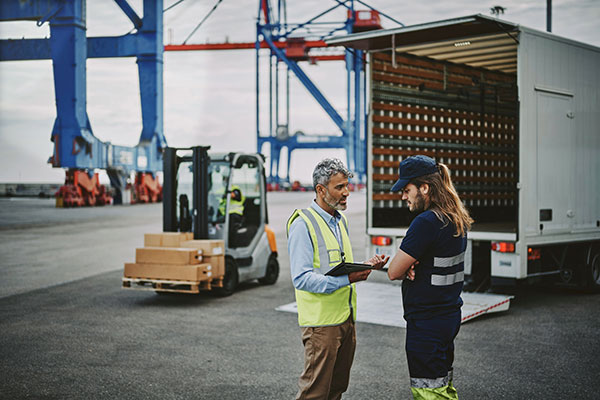How supply chain leaders are investing in new technology
Before you can fully embrace a predictive supply chain, you need to start implementing a data-driven strategy and approach.
When it comes to digitization, everyone's at a different stage in their journey. Most companies have already started to utilize digital methods for one or more tasks within their operations. However, a majority of organizations still rely on manual documentation when tracking shipments.
In fact, new research commissioned by HERE Technologies and conducted by ABI Research revealed that nearly 70% of fleet management and supply chain leaders still rely on spreadsheets, worksheets and paper driver logs as part of their shipment tracking processes. But as we all know, manual processes are outdated and tedious. They are prone to human error and can hinder an operation's visibility and potential growth.
Survey respondents mentioned prompt service (55%), costs (54%), staffing complexities (49%) and workflow automation (47%) as their top concerns. Many of these challenges can be addressed with better visibility and a smarter, more predictive supply chain.
“Shifting to a data-driven culture has been a slow process for many companies for several reasons. A couple of the biggest challenges are enabling data-driven decision-making and aggregating all the separate sources that data is scattered across, such as different systems and companies,” said Bart Coppelmans, global head of industry solutions at HERE.
Once the data is available, analytics provides crucial context so it can be relevant to the decision-making process. However, most respondents (61%) said predictive analytics is the largest gap they have to improving supply chain visibility.
“This is where HERE can help connect different stakeholders and data sets. Our core capabilities allow you to blend and aggregate disparate data sets and put them into context with value-added insights for your customers,” said Coppelmans. “Location data analytics puts your logistics operation data into context. We add real-world events, alert notifications, machine learning analytics and models to make logistics and supply chain software more predictive.”
Building a more predictive supply chain
While the distance between completely manual processes and being fully predictive may seem great, there are plenty of stepping stones along the way that can increase your operation's efficiency, accuracy and cost savings. Just a few years ago, predictive supply chains seemed out of reach because the data wasn't available. Now, with loads of accessible information at our fingertips, supply chain leaders are better positioned to start building more predictive supply chains. So, what's standing in the way of widespread tech implementation?
According to the research from HERE, 31% of survey respondents said their biggest barrier to tech implementation was knowing where to start and 39% said their biggest challenge was identifying the right partners or suppliers. In other words, there's a lot of hesitancy and confusion when it comes to digitization. To help fill this knowledge gap, here are five important factors to consider along your digitization journey.
1. Adopt a data-driven strategy and approach
Before you can fully embrace a predictive supply chain, you need to start implementing a data-driven strategy and approach. On top of that, an honest talent assessment is required. Do you have the skilled data scientists and analysts to analyze specific data sets?
2. Pinpoint your data gaps and silos
Be sure to have the full picture. When it comes to data, it's important to understand what's going on within your operations and what you do or don't have access to. Connecting your assets integrates and then normalizes these data sets from all the different stakeholders. Is there a lack of transparency anywhere? Are there data gaps and is your data useable?
3. Consider the larger tech stack:
There are off-the-shelf solutions and software that can easily integrate into your larger tech stack. Whether the problem areas include visibility, ETA accuracy, driver onboarding and safety, warehouse optimization and middleand last-mile efficiency there are ready-made solutions that can be the plug-and-play answers you're looking for.
4. Test implementation
The testing process for a new solution will largely depend on the area of the business you're trying to improve. If you or your company manage first-, middle- or last-mile deliveries, the testing stage could look something like this:
- Use sample data to model concepts (tours, spend, etc) against the actual completed tours to see optimization potential
- Test conversion of job data from an order management system to ensure that all necessary data is being properly included
5. Implementation
Using the same fleet scenario, after testing is complete, this is what the implementation process would look like:
- Step one: Define depot and fleet locations
- Step two: Register drivers and dispatchers for user-friendly tools (eg, app, navigation)
- Step three: Import job data
- Step four: Optimize and dispatch tours
- Step five: Complete tours via the guidance and delivery confirmation in the driver app
- Step six: Review completed tours via the analytics dashboard
To see how logistics leaders are using location technology to build better software and predictive supply chains, visit here.com/logistics.













